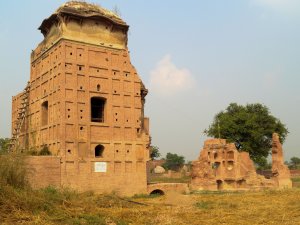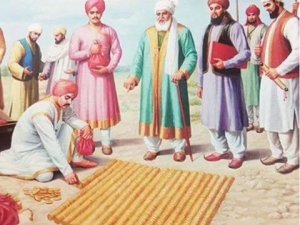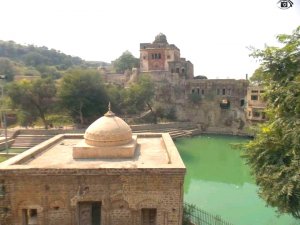Introduction
Shikarpur in the province of Sindh, which is now part of Pakistan, was visited by Guru Nanak Sahib during his travels, commonly known as Udasis.Shikarpur was the seat of trade and commerce due to its strategic location in Sindh as it was directly accessible to those who travelled to and from Central and West Asia through the Bolan Pass (in Baluchistan). Throughout the 1830s the city remained a bone of contention between Maharaja Ranjit Singh and British East India Company who did not want the former to spread his wings towards Sindh.
All the Janamsakhis mention that Guru Ji came to Shikarpur while on his way to Central Asia. However, only one Janamsakhi, Bhai Bala wali Janamsakhi, gives details regarding his meeting and discourse at Shikarpur.
Bhai Bala Janamsakhi
Bhai Bala Janamsakhi has rightly been challenged and questioned during the past one century. The language of the Janamsakhi is more modern than the Puratan Janamsakhi and biggest fallacy is contained itself in the book. Bhai Bala and Guru Angad Sahib were unaware of each other. If the former was a lifelong companion of Guru Nanak Sahib he should have been acquainted with the later as Guru Angad Sahib spend many years with Guru Nanak during his stay at Kartarpur (Nairowal District, Pakistan). Dr. Kirpal Singh in his ‘Janamsakhi Parampara’, one of the most comprehensive works on all Janamsakhis mentions that 5 sakhis contained in the old text are no longer published as they are a clear interpolation of Hindalis who wanted to show their Master, Baba Hindal in a better light in comparison to Guru Nanak. On the other side of the spectrum, for some historians, Bhai Bala Sandhu did not exist as he is not mentioned in other Janamsakhis and by Bhai Gurdas Ji.
A careful study of the Bhai Bala Janamsakhi provides the clue. Most of its sakhis are similar to the ones found in Puratan, Vilayatwali and Meharban Janamsakhis hence we cannot dismiss this Janamsakhi as pure imagination. Dr. Ganda Singh in the ‘Guru Nanak Birth Quincentenary Volume of The Punjab Past & Present Journal’ has provided a very logical explanation.
He states that the close study of the various Janamsakhis and of the revenue records of the town of Nanakana Sahib leads to the conclusion that Bhai Bala was a contemporary and a companion of Guru Nanak. The great historian adds that Bhai Bala appears in the pedigree of the Sandhu Jats of Nanakana Sahib and there still exists, outside the town, a well, known as ‘Bhai Bale da Khooh’. It is further added that Bhai Bala being a Jat was deeply attached to his ancestral lands did not stay with Guru Nanak at Sultanpur Lodhi and did not accompany Guru Ji in his far off travels either in India or abroad.
Guru Ji at Shikarpur
The details regarding Guru Sahib’s visit to Shikarpur are contained under ‘Sakhi of Daud Julaha’ (Sakhi of Daud the Weaver) are as follows: Nur Nushtar, a butcher was grazing some goats, caught sight of Guru Ji and brought a glass of milk. Guru Nanak Sahib asked him what brings him here. The butcher replied “I am penniless. I have heard, if we serve the faqirs, they give blessings which become true. That's why I brought the milk to you, thinking that you would make me a rich man of this land.” Guru Sahib advised him to take a bath in amrit vela (Pichle Raat) and recite the name of the Lord. Serve the needy and ‘Sadh Sant’ (Saintly people) and blessed him.
Then a weaver named Daud brought a galicha (carpet or rug) for Guru Nanak. He put the galicha down and requested Guru Sahib to sit on it. Guru Ji replied that the earth is the galicha, which is spread by the lord. This galicha neither grows old nor becomes dirty. Then there was a pregnant dog, which was shivering with cold. Guru Ji asked Daud to put his galicha on the pregnant dog and give it some food. Daud told Guru Sahib that he was childless and wish to have a child. Guru Ji advised him to recite the name of Lord, serve the ‘Sadh Sangat’ (Company of Saintly people) and blessed him
Guru Ji in Sindh
After blessing both of those, Guru Sahib moved on further in the Sindh province and at one place (name of place not mentioned in the Janamsakhi) saw a man named Sarwan meditating (Tap kar reha si) and recited the following Shabad
ਆਸਾ ਘਰੁ ੪ ਮਹਲਾ ੧
ੴ ਸਤਿਗੁਰ ਪ੍ਰਸਾਦਿ ॥
ਦੇਵਤਿਆ ਦਰਸਨ ਕੈ ਤਾਈ ਦੂਖ ਭੂਖ ਤੀਰਥ ਕੀਏ ॥
The Gods yearning for the Blessed Vision of the Lord's Darshan suffered through pain and hunger at the sacred shrines.
ਜੋਗੀ ਜਤੀ ਜੁਗਤਿ ਮਹਿ ਰਹਤੇ ਕਰਿ ਕਰਿ ਭਗਵੇ ਭੇਖ ਭਏ ॥੧॥
The yogis and the celibates live their disciplined lifestyle, while others wear saffron robes and become hermits. ||1||
ਤਉ ਕਾਰਣਿ ਸਾਹਿਬਾ ਰੰਗਿ ਰਤੇ ॥
For Your sake, O Lord Master, they are imbued with love.
ਤੇਰੇ ਨਾਮ ਅਨੇਕਾ ਰੂਪ ਅਨੰਤਾ ਕਹਣੁ ਨ ਜਾਹੀ ਤੇਰੇ ਗੁਣ ਕੇਤੇ ॥੧॥ ਰਹਾਉ ॥
Your Names are so many, and Your Forms are endless. No one can tell how may Glorious Virtues You have. ||1||Pause||
ਦਰ ਘਰ ਮਹਲਾ ਹਸਤੀ ਘੋੜੇ ਛੋਡਿ ਵਿਲਾਇਤਿ ਦੇਸ ਗਏ ॥
Leaving behind hearth and home, palaces, elephants, horses and native lands, mortals have journeyed to foreign lands.
ਪੀਰ ਪੇਕਾਂਬਰ ਸਾਲਿਕ ਸਾਦਿਕ ਛੋਡੀ ਦੁਨੀਆ ਥਾਇ ਪਏ ॥੨॥
The spiritual leaders, prophets, seers and men of faith renounced the world, and became acceptable. ||2||
ਸਾਦ ਸਹਜ ਸੁਖ ਰਸ ਕਸ ਤਜੀਅਲੇ ਕਾਪੜ ਛੋਡੇ ਚਮੜ ਲੀਏ ॥
Renouncing tasty delicacies, comfort, happiness and pleasures, some have abandoned their clothes and now wear skins.
ਦੁਖੀਏ ਦਰਦਵੰਦ ਦਰਿ ਤੇਰੈ ਨਾਮਿ ਰਤੇ ਦਰਵੇਸ ਭਏ ॥੩॥
Those who suffer in pain, imbued with Your Name, have become beggars at Your Door. ||3||
ਖਲੜੀ ਖਪਰੀ ਲਕੜੀ ਚਮੜੀ ਸਿਖਾ ਸੂਤੁ ਧੋਤੀ ਕੀਨ੍ਹ੍ਹੀ ॥
Some wear skins, and carry begging bowls, bearing wooden staffs, and sitting on deer skins. Others raise their hair in tufts and wear sacred threads and loin-cloths.
ਤੂੰ ਸਾਹਿਬੁ ਹਉ ਸਾਂਗੀ ਤੇਰਾ ਪ੍ਰਣਵੈ ਨਾਨਕੁ ਜਾਤਿ ਕੈਸੀ ॥੪॥੧॥੩੩॥
You are the Lord Master, I am just Your puppet. Prays Nanak, what is my social status to be? ||4||1||33||
(SGGS Ang 358-59)
On hearing the Shabad, Sarwan fell on the feet of Guru Ji and told him that there are two Peers (Sufi Masters) from Multan at this place and that they do not let anyone meditate. Sarwan added that they are well respected and he wishes that he is also accepted by people. Guru Ji replied that just as there are flies around Gurh (Jaggery) and other sweet products, too many people around a person who does ‘bhajan bandgi’ are a distraction. Guru Ji blessed and advised him to recite the name of Lord, serve the ‘Sadh Sangat’ without ego or arrogance.
Gurdwara Sahib
Bhai Vikash Singh who is Main Sewdar, Granthi and Kirtaniya has kindly provided these pictures of the Gurdwara Sahib. The Gurdwara Sahib at Shikarpur like other Gurdwaras in North Sindh came into existence only few years ago. Although there are numerous Udasi Darbars and Tikana (Sindhi Hindu place of worship) which are much older, this is the only Gurdwara Sahib in Shikarpur. There would have been a Gurdwara Sahib in Shikarpur before partition but I am unaware of their whereabouts. Sardar Amardeep Singh, author of the famous book ‘Lost Heritage: The Sikh Legacy in Pakistan’ has visited Sindh and is writing a sequel to his book. I am sure he will make us wiser on this subject.
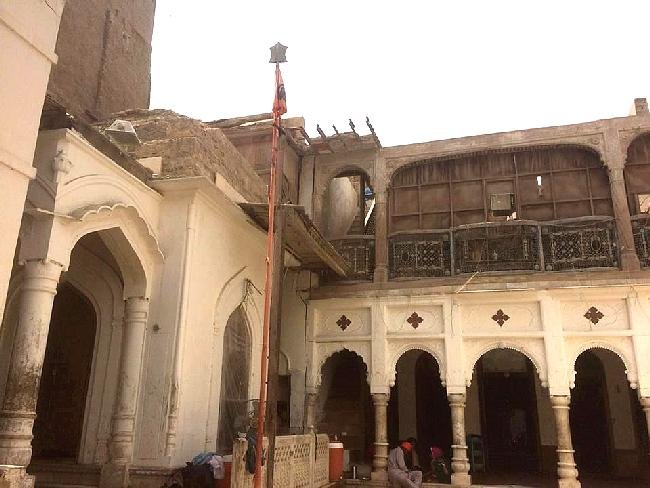
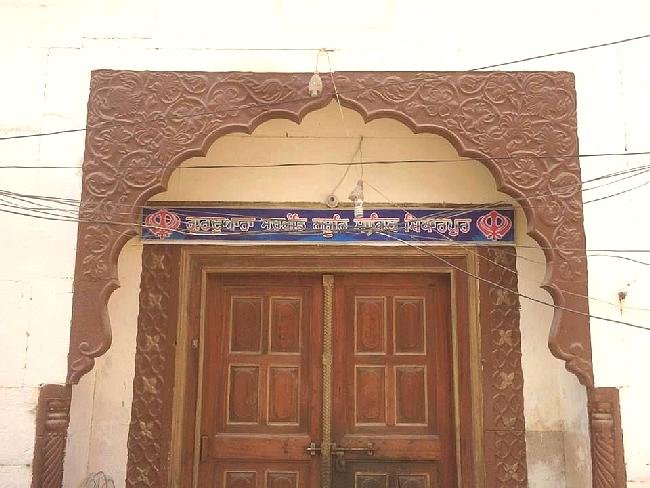
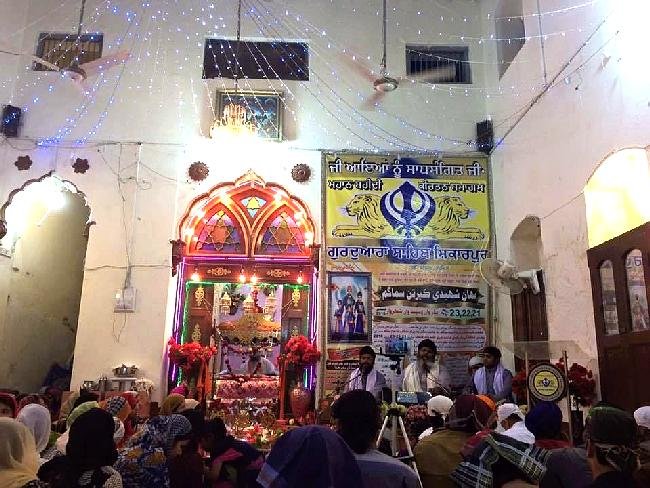
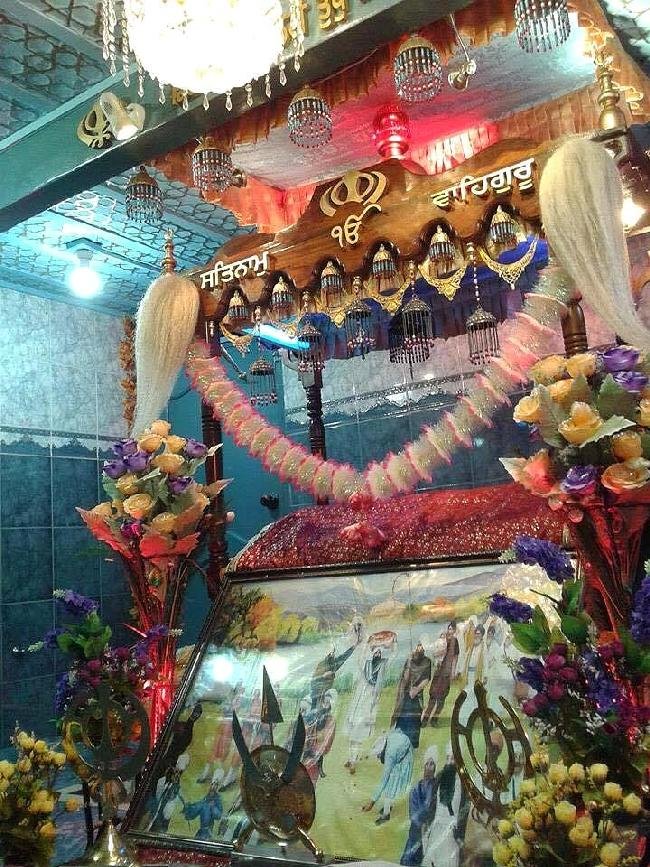
There are only 5 Khalsa Sikhs in the town and the local sangat consists of ‘Nanakpanthis’. These Sindhi Nanakpanthis are ‘Sehajdhari Sikhs’ and have great devotion towards Guru Nanak and Guru Granth Sahib. They learn Gurmukhi script specifically to read and recite Gurbani. Bhai Vikash Singh was himself a Nanakpanthi and took ‘Pahul’ in 2010 and became ‘Khalsa Sikh’. Wahe Guru Ji bless them with Chardi Kala.
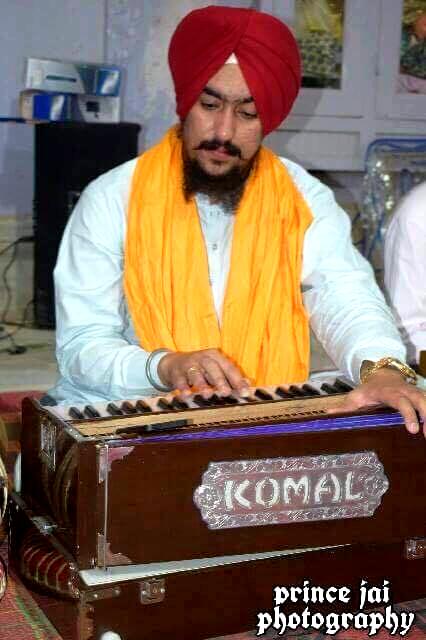
Bhai Vikash Singh
References
Bhai Bala Wali Shri Guru Nanak Dev Ji di Janamsakhi, 39th Edition, Feb 2010 B. Chattar Singh Jiwan Singh, Amritsar page 704-06
Sources on the life & teachings of Guru Nanak, The Panjab Past & Present, Punjabi University Patiala, 1969, p18-19


